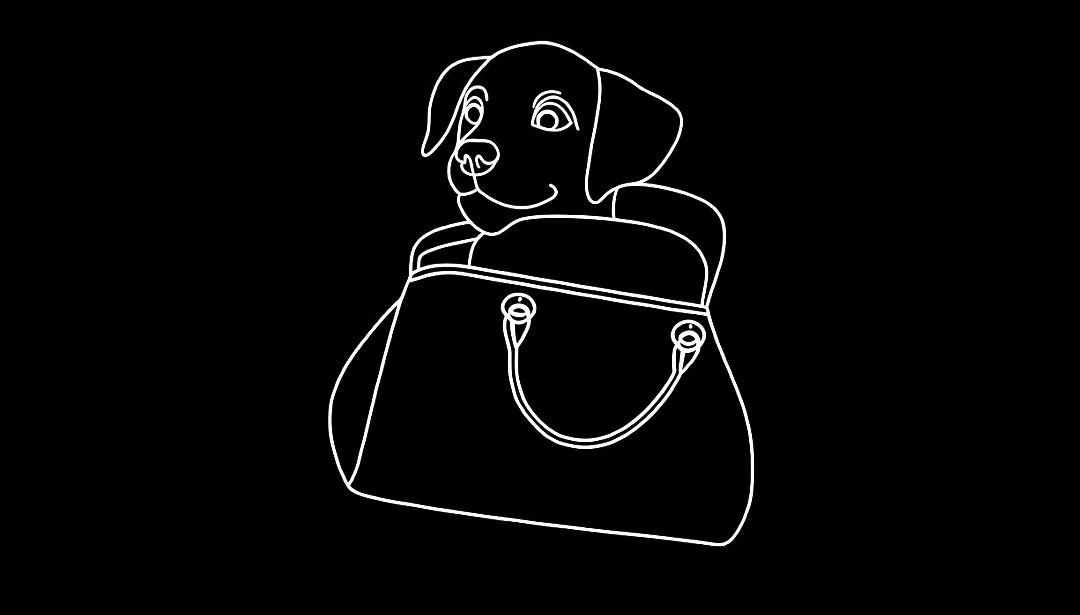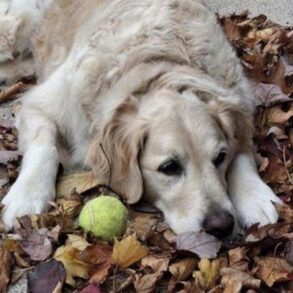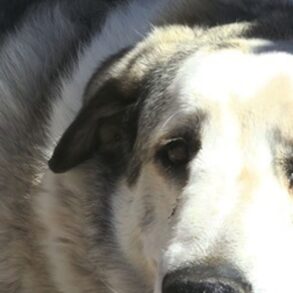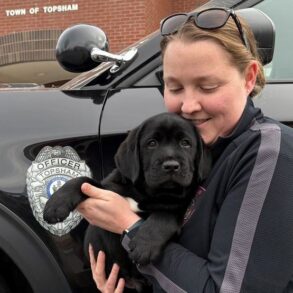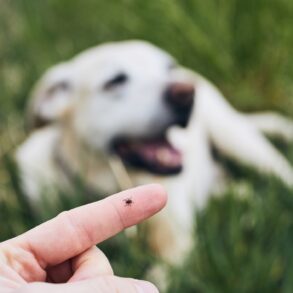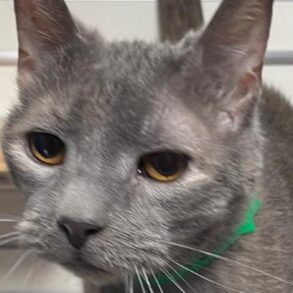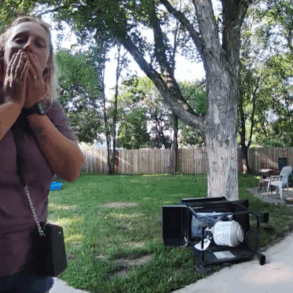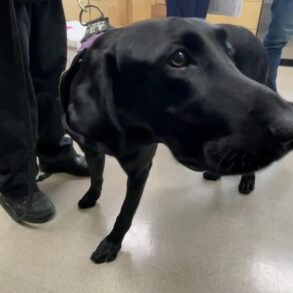Illustrator Lili Chin became fascinated with dog behavior in 2008 after her Boston terrier, Boogie, bit their landlord and they almost got evicted.
Ordered by her landlord to get training for Boogie or else, Chin sought out animal behaviorists. Soon, she was using her drawing skills to collaborate with them on posters and pamphlets aimed at helping pet parents better understand their dogs and cats by reading their body language.
That ultimately led Chin to write the books “Doggie Language” (2020) and “Kitty Language” (2023). With whimsical illustrations that drew on her animation experience, she interpreted signs of distress, irritation, content or excitement in body movements such as a wagging tail or flattened ears.
Advertisement
Advertisement
The books have proved so popular that some pet trainers recommend them to clients to help make sense of a pet’s difficult behavior. Chin offers free downloads of certain infographics for noncommercial use.
Coming out this week, Chin’s third book, “Dogs of the World: A Gallery of Pups from Purebreds to Mutts,” is an ambitious attempt to introduce and illustrate every type of dog around the globe — more than 600 by her count.
It is one in a slew of new books about pets, many with charming illustrations that make them especially accessible. The recent “Medieval Cats,” for instance, by Catherine Nappington, features funny cat poems, sayings and drawings from the Middle Ages. “Ursula K. Le Guin’s Book of Cats,” due out this fall, pulls together poems, musings and sketches by the science fiction writer, who died in 2018.
Speaking by phone from Los Angeles, where she lives with her husband and two cats, Mambo and Shimmy, Chin said “Dogs of the World” was her most daunting project yet.
Advertisement
Advertisement
“I’m counting on pet owners to be interested and would be happy to get non-pet owners interested as well,” she said. “Even if we don’t have a dog, we are in contact with them all the time. People looking to adopt can also learn a lot.”
A survey of the world’s pups
Chin starts with drawings of nearly 400 officially recognized breeds, including better-known ones like golden retrievers, border collies, German shepherds, various terriers and poodles.
She also introduces readers to more obscure breeds: Venezuela’s official dog, the large, rugged Mucuchies; Lapponian herders; muscular white Rajapalayam, or ghost hounds, from southern India; Thai ridgebacks that are hard to find outside of Thailand; hairless Peruvian Inca orchids.
Advertisement
Advertisement
And she describes other groupings of dogs, such as those that live in communities without a specific person caring for them. She argues that these dogs are not strays because the communities watch over them, often feeding them and even giving them names.
Those community animals include so-called “rez dogs” that roam the tribal reservations in the U.S., free-ranging street dogs that live inside the Moscow metro and have learned to ride the trains, and various kinds of Asian, North African and European village dogs.
Chin mentions the dogs of Chernobyl that barely survived after the 1986 disaster because they were fed by workers visiting the exclusion zone. She even illustrates dingos from her native Australia, and the New Guinea singing dog from Papua New Guinea, a primitive local breed that lives in nearly feral conditions in highland forests.
Communication between humans and their companions
Advertisement
Advertisement
Animal behavior consultant Emily Strong, who Chin consulted on “Dogs of the World,” praised “her ability to pack an impressive amount of information into a few succinct words and simple but beautiful illustrations — making complex topics easily digestible.”
“She has such an incredible way of clearly communicating body language signals through illustration,” said Strong.
One of Chin’s earliest illustration clients was the late Dr. Sophia Yin, a veterinarian and renowned animal behaviorist who developed a training method known as “low stress handling” to reduce fear, anxiety and stress in pet patients.
Through Yin and other behaviorists, Chin said, she came to embrace training methods that focus on food rewards and reject ideas around dominance, correction and punitive methods.
Advertisement
Advertisement
“There is so much misinformation and so many enduring myths around dog behavior and dog breeds,” Chin said. “What I hope my work does is help offer clarity on these topics.”
___
Anita Snow, a former Associated Press staff writer and editor, lives in Tucson, Arizona, and has a German shepherd-husky mix, Shelby. Her work can be seen at anitasnow.com.
___
For more AP stories about pets, go to https://apnews.com/hub/pets.
This post was originally published on this site be sure to check out more of their content.
